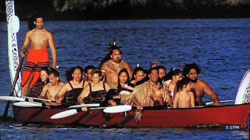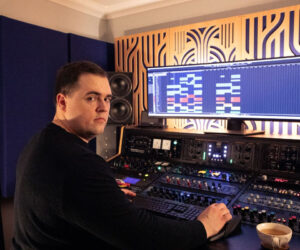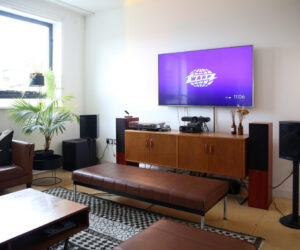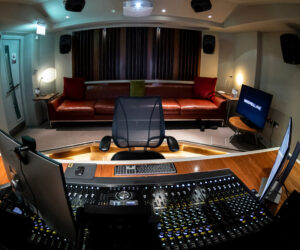In 1845, Maori warriors challenged the British Empire after Hone Heke—one of the tribal leaders— felt that British settlers had reneged on their treaty obligations and infringed upon the North Island of Aotearoa, known today as New Zealand.
The Maori fought tenaciously and developed defenses that would have been perfectly suited to a First World War battlefield.
This story lives on among Hone Heke’s ancestors and is part of a three-part documentary series call Victoria’s Empire that was produced by Tiger Aspect Productions of London and televised on the BBC, the sound which was captured using wireless technology from Lectrosonics.
Auckland, New Zealand-based production sound mixer Mike Westgate received the call to handle location sound for this challenging project. “The Maori war canoe, Waka Taua, is low-to-the-water and a cramped vessel,” said Westgate.
“I knew that, with all the oars propelling the canoe, there would be lots of splashing. Water, of course, is not the friendliest of elements toward electronic equipment.”
“For this reason, it was clear to me that if I was to have any success; the only equipment for the job was one of my Lectrosonics’ MM400A water-resistant miniature beltpack transmitters.”
Westgate’s two MM400A transmitters were paired with Countryman B6 omnidirectional lavaliere microphones. These transmitters communicated with a pair of Lectrosonics UCR100 beltpack receivers. Westgate also used two Lectrosonics UM200 frequency agile beltpack transmitters (also with Countryman B6 microphones) with a pair of UCR201 compact diversity receivers.
According to Westgate, “We were shooting in India, Hong Kong, Borneo, New Zealand, Australia, and Zambia. We had two equipment sets to ensure against any accidents or frequency conflicts and this particular combination of equipment worked very well for us.”
“The fact that the two pairs or radio microphones were on different blocks was another advantage. I kept the UCR100 receivers on block 24 while the UCR201’s were on block 22.”
“I work under some very demanding conditions, so the gear takes a fair amount of abuse and it has to work consistently,” he said. “The build quality, the logical menus, and the level of support Lectrosonics provides are first rate. It all adds up to a very positive field experience.”
“All the interview dialogue was achieved using wireless microphones,” Westgate said, “and the audio quality is superb on the film’s DVD. We filmed from an adjacent boat and it was a last minute decision of mine to place the Lectrosonics MM400a onboard the canoe.”
“Once we started shooting, I handed my headphones to director Ben Warwick. He simply could not believe the results that captured the power of the moment. Coupled with the sight of the Maori canoe filled with men and women rowing and chanting, the sound of paddles and water swishing was an experience that made me feel very proud.”
Click Here for a sample recording from the Maori war canoe.




















